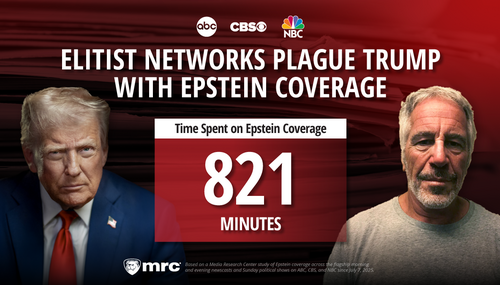When Hollywood-based New York Times reporter Brooke Barnes filed "Censoring Anti-Muslim Video Was Wrong, Court Says," for Tuesday's Business section, one vital scene was left on the cutting room floor, which could have reminded readers of an inconvenient controversy involving Hillary Clinton: Benghazi.
In 2012, Barnes co-wrote a slanted story on the same subject -- Nakoula Basseley Nakoula, the jailed filmmaker behind the "Innocence of Muslims," the movie (actually just a preview clip on Youtube) that was blamed for mass rioting in many countries among Islamic extremists. Barnes' story appeared under a headline that blamed the filmmaker, not the radical rioters, for the deaths: "After Fueling Deadly Protests, No Regret." Blogger Jim Treacher summarized: 'The self-styled Newspaper of Record just asked a guy if he regrets exercising his right to free speech." That pattern of blaming the victim would become all too common in the Times.
As Barnes wrote on Tuesday:
An anti-Muslim movie trailer that set off protests in 2012 returned to the spotlight on Monday when a federal appeals court ruled that YouTube should not have been forced to remove the crude video from its website.
In a victory for free speech advocates, an 11-judge panel of the United States Court of Appeals for the Ninth Circuit in San Francisco rejected a copyright claim by Cindy Lee Garcia, an actress who appeared unwittingly, she said, in the “Innocence of Muslims” trailer. Ms. Garcia had earlier won the forced removal from YouTube of the video, which depicted the Prophet Muhammad as a bloodthirsty thug.
....
Ms. Garcia, who was supported by some Hollywood guilds in her case, pursued legal action after the trailer resulted in death threats. (The full movie has never materialized.) She said the “Innocence of Muslims” filmmaker, Nakoula Basseley Nakoula, tricked her into appearing and secretly dubbed over her dialogue with anti-Muslim rhetoric. Ms. Garcia, who was paid $500 for her work, thought she was a bit player in a sword-and-sandal movie called “Desert Warrior.”
....
It was unclear when or if the “Innocence of Muslims” video would return to YouTube. In 2012, it led to wide protests, beginning in Cairo and spreading to countries including Iran, Pakistan and Malaysia. In a statement, YouTube said only: “We have long believed that the previous ruling was a misapplication of copyright law. We’re pleased with this latest ruling by the Ninth Circuit.”
Yet one sub-plot was skipped in that roll call of countries that protested the Youtube video: the deadly protests by radical Islamists against the U.S. consulate in Benghazi, Libya, on the anniversary of September 11, in 2012, a day on which four Americans were killed, including Christopher Stevens, U.S. ambassador to Libya. The Obama administration initially (and falsely) blamed those deadly attacks on the Youtube video as well, placing the immediate focus on the filmmaker and other opponents of radical Islam, not on the administration's inadequate security in Benghazi on the 11th anniversary of the U.S. terror attack.
Barnes made no mention of the controversy, which involved then-Secretary of State and now Democratic presidential candidate Hillary Clinton, amid questions about what she knew of the inadequate security measures around the consulate in Benghazi.
The Obama administration famously sent U.S. ambassador to the U.N. Susan Rice onto all five Sunday news shows on September 16, 2012 to argue (falsely) that the attacks were a "spontaneous" reaction to “a hateful and offensive video that was widely disseminated throughout the Arab and Muslim world.” How convenient, as 2016 draws near and Hillary Clinton bolsters her presidential credentials, for the Times to flush that storyline down the memory hole.




